 Image search results - "home" Image search results - "home" |

Gokasho is famous for the grand, old homes of wealthy Omi merchants. Three of them are clustered together for us to visit inside. They are the former residences of Tonomura Uhee (外村 宇兵衛), Tonomura Shigeru (外村 繁), and Nakae Jungoro (中江
|
|

Sugawara house from Tsuruoka city, Yamagata Prefecture. In heavy snow, the front window was used as the door.
|
|

Front of Yoshida Chiaki's home in Niigata (formerly Niitsu) which I visited in Nov. 2007. Yoshida Chiaki composed a song called "Hitsuji-gusa" (Water Lilies) whose melody was used for the song "Biwako Shuko no Uta" (Lake Biwa Rowi
|
|

Former Hatano residence and birth home of Yoshida Togo 旧旗野邸 (吉田東伍生家)
|
|

Gokasho was home to many Omi merchants who plied up and down Japan during the Edo Period to sell and trade their wares. They became quite successful selling medicines, lacquerware, sake, etc.Wall of former home of Omi merchant Tonomura Shigeru (1902-1961) (外村 繁邸).
|
|

Ceiling
|
|
|

Rear view of birth home of Yoshida Togo who was a famous geographer of Japan who compiled an encylopedia of Japanese place names. His son was Yoshida Chiaki who composed the melody of the song "Biwako Shuko no Uta" (Lake Biwa Rowing Song).
|
|

Former home of Omi merchant Tonomura Shigeru (外村 繁邸). MapTonomura Shigeru (外村 繁), Tonomura Uhee (外村 宇兵衛), and Nakae Jungoro (中江 準五郎)
|
|

Kitamura house brought from Hadano, Kanagawa
|
|

Front gate of Yoshida Chiaki's home
|
|

A room in the birth home of Yoshida Togo
|
|
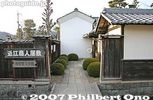
Entrance to former home of Omi merchant Tonomura Shigeru (外村 繁邸). Gokasho is also a National Important Traditional Townscape Preservation District (重要伝統的建造物群保存地区).
|
|

Kitamura house
|
|

Inner garden. I met Yoshida Yuki (吉田ゆき), the niece of Yoshida Chiaki who showed me the house and a few materials. Flowers planted by Chiaki still grow in the garden.
|
|

Garden of the birth home of Yoshida Togo
|
|

Entrance to former home of Omi merchant Tonomura Shigeru.
|
|

Nihon Minkaen is an outdoor museum of traditional farm and merchant houses with thatched roofs. They have 25 homes from around Japan many were donated to the museum for preservation.
|
|

Yoshida Chiaki's room on the 2nd floor.
|
|

Entrance to the Yoshida Togo Memorial Museum which exhibits various documents and personal effects of Yoshida Togo. Museum admission 300 yen. Closed Mon.
|
|

Living room of former home of Omi merchant Tonomura Shigeru.
|
|
|

Yoshida Chiaki's room on the 2nd floor. This is where he spent his final days while stricken with tuberculosis.
|
|

Inside Yoshida Togo Memorial Museum. The 2nd floor also has a display panel about his son Yoshida Chiaki who composed the song "Hitsuji-gusa" whose melody was used in the song "Biwako Shuko no Uta" (Lake Biwa Rowing Song).
|
|
|
|
|

View from Yoshida Chiaki's room on the 2nd floor. Sometimes they receive local school children for tours of the house.
|
|
|

Thatched roof
|
|

Stairs from Yoshida Chiaki's room on the 2nd floor.
|
|
|

Water nozzles aimed at the house. No smoking.
|
|

Original copy of the magazine "Ongaku-kai" (The Musical Japan) where Yoshida Chiaki's song "Hitsuji-gusa" was first published and made popular. Issued in Aug. 1915. 音楽界
|
|

Woman's hairdressing room.
|
|
|

Table of Contents of magazine "Ongaku-kai" (The Musical Japan) 音楽界. Many music-related articles.
|
|

Entrance to Chomeiji Temple. MAP
|
|
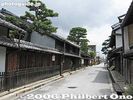
Shinmachi-dori road with traditional Omi merchant homes. This area is also a National Important Traditional Townscape Preservation District (重要伝統的建造物群保存地区). 近江商人の新町通り MAP
|
|

Room with Hina festival dolls and entrance to the Tonomura Shigeru Literature Museum. 雛祭りの雛人形
|
|
|

On the first page is Yoshida Chiaki's song "Hitsuji-gusa" (Water Lilies) which was acclaimed enough to be published here.
|
|

In Omi-Hachiman, Shinmachi-dori looking toward Hachimanyama. This area is also a National Important Traditional Townscape Preservation District (重要伝統的建造物群保存地区).
|
|

Hina festival dolls. 雛祭りの雛人形
|
|
|

On the first page is Yoshida Chiaki's song "Hitsuji-gusa" (Water Lilies). Although the melody is different, the lyrics are a direct translation of a childen's song called Water Lilies written by E.R.B. in the UK.
|
|
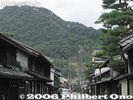
Shinmachi-dori looking toward Hachimanyama
|
|

Hina festival dolls. 雛祭りの雛人形
|
|

Yamada house
|
|

Small book titled "A Garland of Flower-Poems" published in Japan. This was owned by Yoshida Chiaki and it includes the UK song "Water Lilies."
|
|

Entrance to the former residence of Omi merchant Fujii Hikoshiro (1876-1956) (藤井 彦四郎邸)
|
|

Tonomura Shigeru Literature Museum (Bungakukan). Shigeru had a passion for writing, so he entrusted the family business to his younger brother. 外村 繁文学館
|
|
|

Page where "Water Lilies" is printed in the book. It is very likely that Chiaki found the song in this book, and decided to make his Japanese version. His signature is on the back of the book.
|
|
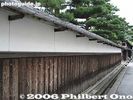
Wall
|
|

The lighting inside the museum also changes to reflect the time of day. This is night time.
|
|

Former residence of Omi merchant Fujii Hikoshiro (1876-1956) (藤井 彦四郎邸). Now a history museum.
|
|

Picture of Tonomura Shigeru in the Literature Museum (Bungakukan). 外村 繁文学館
|
|
|
|

Day time
|
|

Omi merchant statue.
|
|

Attic
|
|

Emukai house brought from Nanto, Toyama. In the gasshi-zukuri style with steep roof. Kawasaki Nihon Minkaen
|
|
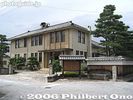
Local Artifacts Museum (Kyodo Shiryokan) 郷土資料館。近江商人・西村太郎右衛門の宅地跡にある資料館
|
|

Rice storehouse
|
|

Omi merchant statue.
|
|

Hina festival dolls. 雛祭りの雛人形
|
|

Nihon Minkaen, Kawasaki, Kanagawa
|
|
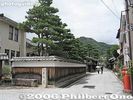
Shinmachi-dori next to Local Artifacts Museum
|
|

Cat on the roof. Meow is what you first hear in the museum. Its name is "Mamesuke." Actually a robot cat whose head can move up and down.
|
|

Bust of Fujii Hikoshiro
|
|

Hina festival dolls. 雛祭りの雛人形
|
|

Inside Emukai house
|
|
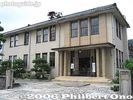
Local Artifacts Museum (Kyodo Shiryokan). Former residence of Omi merchant Nishimura Tarouemon. 郷土資料館
|
|

Foyer of house 玄関
|
|

Hina festival dolls. 雛祭りの雛人形
|
|
|
|
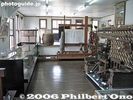
Inside Local Artifacts Museum (Kyodo Shiryokan)
|
|

Entrance room
|
|

2nd floor balcony (Watch your head).
|
|
|
|
|

YouTube video of the song Hitsuji-gusa (Water Lilies) by a choir called Koai Gassho no Kai (小合合唱の会) performing at a memorial gathering on the anniversary of Chiaki’s death in Feb. 2013 at Chiaki’s birth home.Video uploaded by Ichii Yasuzo in Niigata.
|
|
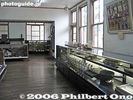
Inside Local Artifacts Museum (Kyodo Shiryokan)
|
|

Omi merchant display
|
|

2nd floor balcony
|
|
|
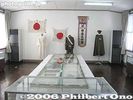
Connected to the Local Artifacts Museum is the History and Folklore Museum (Rekishi Minzoku Shiryokan) 歴史民族資料館
|
|

Corridor to rooms and garden.
|
|

View from 2nd floor balcony
|
|
|

Soldier's uniform, History and Folklore Museum
|
|

2nd floor with more Hina dolls.
|
|
|

History and Folklore Museum
|
|

Another guest meeting room 客間
|
|

2nd floor room with Hina festival dolls. 雛祭りの雛人形
|
|

Nihon Minkaen, Kawasaki, Kanagawa
|
|

Soldier's send-off flag, History and Folklore Museum
|
|

Main guest room 主客間
|
|

2nd floor room looking toward the balcony.
|
|

Toilet
|
|
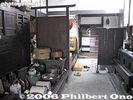
Omi merchant daily implements, History and Folklore Museum
|
|

Main guest room
|
|

Hina festival dolls in alcove.
|
|

The museum park has 25 homes from around Japan many were donated to the museum for preservation. Near Mukogaoka-yuen Station on the Odakyu Line. Closed Mon. Admission 500 yen.
|
|
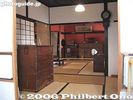
Omi merchant house, History and Folklore Museum
|
|

Main guest room
|
|

Hina festival dolls
|
|

Water mill
|
|
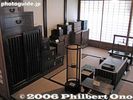
Omi merchant furniture, History and Folklore Museum
|
|

Exterior view
|
|

2nd floor with Hina festival dolls
|
|

Inside water mill
|
|
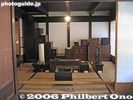
Omi merchant furniture, History and Folklore Museum 近江商人の帳場風景
|
|

Exterior view
|
|

Hinamatsuri dolls
|
|

Hydrangea
|
|
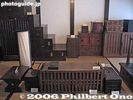
Omi merchant desk, History and Folklore Museum 近江商人の帳場風景
|
|

Spacious garden outside Fujii Hikoshiro house
|
|
|
|

808 steps to Chomeiji. Chomeiji (Long Life Temple) worships the Kannon goddess dedicated to long life and good health. It belongs to the Tendai Buddhist sect.
|
|
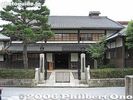
Former Ban family Omi merchant home which also served as a girls school and public library until 1997. Omi-Hachiman, Shiga. 旧伴家住宅Opened to the public in 2004 as a museum. 伴庄右衛門は江戸時代初期から活躍した八幡商人の一人で、屋号を扇屋といい、主に畳表・蚊帳を商い豪商となった。
|
|

Spacious garden outside Fujii Hikoshiro house (in background)
|
|

Kitchen area with dirt floor.
|
|
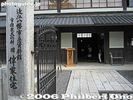
Entrance to former Ban family residence. Completed in 1840. 旧伴家住宅伴庄右衛門は江戸時代初期から活躍した八幡商人の一人で、屋号を扇屋といい、主に畳表・蚊帳を商い豪商となった。
|
|

Pine tree in garden
|
|

Kitchen area
|
|

Ginza 4-chome
|
|
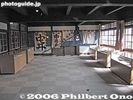
Inside former Ban family residence. They made their fortune selling mosquito nets and tatami straw matting.
|
|

Spacious garden and Fujii Hikoshiro house
|
|

Furo bath wirth wooden barrel (heated by firewood)
|
|
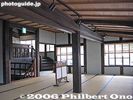
Inside former Ban family residence.
|
|
|

Changing room next to bath.
|
|
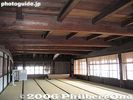
Inside former Ban family residence, 2nd floor.
|
|

Western-style room
|
|

Path to next Omi merchant home.
|
|
|

Statue of Fujii Hikoshiro
|
|

Turn left there.
|
|
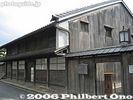
Former Nishikawa Residence (Kyu-Nishikawa-ke Jutaku), large Omi merchant home designated as an Imnportant Cultural Property. Omi-Hachiman, Shiga. 旧西川家住宅 国重要文化財
|
|

Old photos of Omi merchants
|
|
|
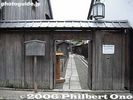
Entrance to Nishikawa Residence. During the Edo Period, the family made their fortune selling mosquito nets and tatami straw matting.
|
|

Old photos of Omi merchants carrying their trademark "tenbin" pole.
|
|

Former home of Omi merchant Tonomura Uhee (1777-1820) (外村 宇兵衛邸).
|
|
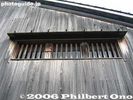
Wall of Nishikawa residence.
|
|

Western-style room
|
|

Entrance to former home of Omi merchant Tonomura Uhee.
|
|

Inside Nishikawa residence. Omi-Hachiman, Shiga. 国重要文化財畳表や蚊帳を扱っていた江戸時代の豪商・西川利右衛門の旧宅
|
|

Record books
|
|

Inside former home of Omi merchant Tonomura Uhee. 玄関
|
|
|
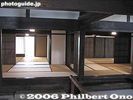
Nishikawa residence.
|
|

Tags and certificates.
|
|

Inside former home of Omi merchant Tonomura Uhee.
|
|
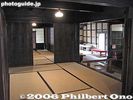
Nishikawa residence.
|
|

Furo bath made of wood.
|
|

Shopfront with shopkeeper's desk.
|
|
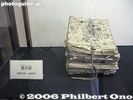
Business diary
|
|

Signs
|
|

Shopkeeper's desk.
|
|
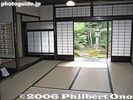
Nishikawa residence.
|
|

Signs
|
|

Living room
|
|

Nishikawa residence.
|
|

Kitchen area
|
|

Bonsai plum and pine trees
|
|

Nishikawa residence.
|
|
|

Bonsai
|
|

Nishikawa residence.
|
|

Shopkeeper
|
|
|

Shopkeep's desk
|
|

Bonsai plum trees
|
|
|
|

Kitchen
|
|

Showcase
|
|
|

Storage area
|
|

Shopkeeper's record book.
|
|

Swing-down ladder to enter upper floor.
|
|

Shopkeeper's record book.
|
|
|

Attic, mainly for storage.
|
|

Omi merchant profiles
|
|

Attic and ceiling
|
|
|

External view
|
|

Obata dolls 小幡人形
|
|

External view
|
|

Garden
|
|

Garden
|
|

Tokonoma alcove
|
|

Garden
|
|

More display cases
|
|

External view of house
|
|
|
|

Statue of Omi merchant peddler carrying his trademark "tenbin" pole.
|
|
|
|

Rickshaws
|
|

Way to the third Omi merchant house.
|
|

Old mail box.
|
|

Former home of Omi merchant Nakae Jungoro (中江 準五郎邸).
|
|

Ohmi Merchant Museum is on the 3rd floor of this building. 近江商人博物館 Map
|
|

Former home of Omi merchant Nakae Jungoro (中江 準五郎邸).
|
|

This is actually the Tenbin no Sato Culture Center. てんびんの里文化学習センター
|
|

Entrance to home of Omi merchant Nakae Jungoro (中江 準五郎邸).
|
|

Ohmi Merchant Museum
|
|

Entrance to home of Omi merchant Nakae Jungoro (中江 準五郎邸).
|
|

Ohmi Merchant Museum
|
|

Inside the home of Omi merchant Nakae Jungoro (中江 準五郎邸).
|
|

Sign showing the way to Omi merchant homes.
|
|

Bonsai
|
|

Corridor
|
|
|
|
|
|

Obata doll museum
|
|

Omi Obata Deko dolls
|
|

Dolls
|
|

Stairs to 2nd floor.
|
|

Stairway
|
|

Tokonoma alcove with scroll.
|
|

Window
|
|

Tokonoma alcove and scroll
|
|

Halfway point and rest stop
|
|

2nd floor room
|
|

View from 2nd floor
|
|

Garden and pond. This house has a nice garden.
|
|

Stone lantern in garden
|
|

Garden
|
|

Garden and former home of Omi merchant Nakae Jungoro (中江 準五郎邸).
|
|

Former home of Omi merchant Nakae Jungoro (中江 準五郎邸).
|
|

Namako wall
|
|
|
|
|
|

The steps never seem to end...
|
|

For people with cars, drive almost to the top
|
|

Top in sight
|
|

Gate to temple, at lastTook me over 20 min. to climb the 808 steps.
|
|

Water fountain
|
|

Last flight of steps
|
|

Stone lantern sculpture
|
|

Verse 6 Lyrics (Chomeiji) 六番の英訳(長命寺)Saigoku pilgrimage, Chomeiji.
Dispel this world's impureness, very faraway.
Golden waves on which we weave, rowing all we can.
Tell us my friends your stories, with your fervent hearts.
西国十番 長命寺
汚れの現世 遠く去りて
黄金の波に いざ漕がん
語れ我が友 熱き心
Saigoku Juban, Chomeiji
Kegare no utsushiyo, tooku sarite
Kogane no nami ni, iza kogan
Katare wagatomo, atsuki kokoro
--
This verse is said to refer to the Pure Land of Buddhism. The song has strong Buddhist overtones, but interestingly the melody happens to be based on a Christian hymn. Chomeiji was a lunch stop before they rowed back to Otsu.
See more photos of Chomeiji Temple here.
|
|

"Saigoku pilgrimage, Chomeiji."
|
|

Chomeiji, 31st temple on the Saigoku Pilgrimage Circuit
|
|
| 788 files on 4 page(s) |
1 |
 |
|